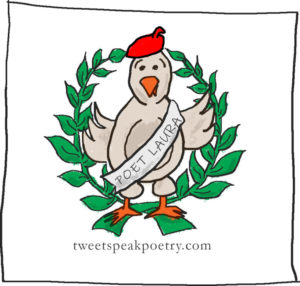As a freshman in college, I took Introduction to Photography as one of my elective courses in the Honors Program. My parents had gifted me a Minolta x700 for high school graduation, and this class was the perfect place to broaden and deepen my visual perspective. Each week, the professor assigned a topic to shoot, such as “natural landscape,” “vernacular landscape,” “sequence,” and “study.” With this curriculum, our learning went well beyond basic camera operations of shutter speed, aperture, and manual focus techniques. The professor was less concerned with technical perfection and more interested in content, and the development of our individual perspectives.
We students were also responsible for developing our rolls of film into slides, using a home procedure and special mix of chemicals to convert negative film into positives. When developing film, the most critical part of the process is removing it from the canister. If any light slips in, the exposed film will be ruined. We didn’t have darkroom access, so every Sunday evening, I gathered with several of my dorm-mates who were also in the class for a weekly ritual. First, we taped warning signs on the bathroom doors, asking please don’t enter until we finish (only about 15 minutes). Then, we’d run masking tape over the cracks in the door, stuff towels under it where hallway light could seep in. Lights out, and then came the giggles. And the giggles echoed and often amplified into chortles and guffaws.
What started the laughter? Good question. Probably a combination of party fatigue and our bold commandeering of a communal space. Add in nervousness about preserving the images we shot for class. Maybe, performing simple tasks without light to guide us. And perhaps our distorted voices in the echoes of the tiled room.

***
This time of year, many holidays celebrate light (or with light) such as Diwali, Hanukkah, and Christmas. Personally, I love the warm glow my white Christmas tree casts over the room, and look forward to resting near it each evening when I return home.
Amid the festivities of the season, though, our souls can also be deeply aware of the somberness that surrounds us. Suffering can be amplified when those around us push forward in celebration. But tucked in the middle of these celebrations is the Winter Solstice, the longest night of the year, where the reality of darkness is acknowledged, and even embraced. It’s the time to meet the darkness within us and around us with acceptance, before a new day comes and we move closer to longer days, more light. Like moths to a flame, we are always rushing toward the light, pushing past the darkness. Poetry can help us be present to the gifts that darkness brings.
Stopping by Woods on a Snowy Evening
Whose woods these are I think I know.
His house is in the village, though;
He will not see me stopping here
To watch his woods fill up with snow.
My little horse must think it queer
To stop without a farmhouse near
Between the woods and frozen lake
The darkest evening of the year.
He gives his harness bells a shake
To ask if there is some mistake.
The only other sound’s the sweep
Of easy wind and downy flake.
The woods are lovely, dark and deep,
But I have promises to keep,
And miles to go before I sleep,
And miles to go before I sleep.
—Robert Frost
***
It’s just so difficult to keep the light out! Especially when screens and other artificial light dominate our days; even after computers, phones, watches and televisions are turned off for the day, appliances, like sentries, tick off hours through the night with a tiny glow.
Once, when scuba diving in Bimini, I had the chance to night dive. Sounds scary, right? 30 pounds of gear strapped to the body, jumping off a boat into the dark ocean. At night. Not totally dark, of course, because the boat had lights, and I had a handheld light for navigation. But the atmosphere was consuming darkness from the ocean to the sky.
The group swam up one side of the reef and down the other, back to the anchor line and onto the boat with ease on this particular reef. Using a light underwater at night is the same as walking through the woods with a flashlight––whatever the beam hits is amplified, and then casts shadows and creates a light show unlike anything in the day. Nurse sharks nestle under the coral heads, eels and other nocturnal fish are busy, just like wood creatures. Except, underwater.
On the way back to the marina, I lay on the bow of the boat, looking up at the sky. Again, there were lights from the boat, but other than that, the night seemed to swallow us. So far away from the mainland, and with the island tech so rudimentary, the sky was free of artificial light, free to be night. So many stars, so many miles deep, the celestial sphere was an enormous freckled face smiling down on me.
***
So much life happens in the dark, unseen. I often think of seeds in frozen ground during Northeast winters, just resting until spring emerges with warmer sun, signaling the next season of growth, of bursting out of dormancy. In Winter Solstice Chant, Annie Finch writes:
Vines, leaves, roots of darkness growing,
come with your seasons, your fullness, your end.
Darkness and light exist in every facet of life. They are inextricably bound, but does darkness only exist to amplify light? Wendell Berry seems to think not. In To Know the Dark, he writes:
To know the dark, go dark. Go without sight,
and find that the dark, too, blooms and sings,
I tend to agree with him:
A Study in Water
I. Night
Moonless night, not moonless the sky
but moon-hidden, the moon inside
me; beside this obsidian pond I sit,
slip my naked body, like quill into well
through the surface; the water the air
I sink under and float above, swallow
night-ink, swallow shadows that hover,
that cover my hunger; from darkness
I whisper through the darkness, search
for what exists, what has been forgotten,
has forgotten, search for words, stirred
only to find them close, so close as if the
hidden moon scrolled them across my skin.
—Michelle Ortega, excerpted from “A Study in Water”
Your Turn
We can’t can’t see in the dark, but we can experience so much if we allow our other senses to heighten. Touch, smell, taste. Our body position in space (proprioception). Hearing, echolocation. Close your eyes and allow your hearing to create a body map. What sound is far away? To your left, to your right? Use the sensory experience and write down what you perceived.
Or, write a poem about what you find in darkness. Make it silly. Turn the fearful into whimsy.
Photo by Izabella, Creative Commons license via Flickr. Post by Michelle Ortega.
- Poet Laura: Message in a Bottle - October 16, 2024
- Poet Laura: Poems for Liminal Times - September 4, 2024
- Poet Laura: Chicken Dreams - August 14, 2024

Bethany says
Beautiful piece, Michelle, thank you. I just love this image. “So many stars, so many miles deep, the celestial sphere was an enormous freckled face smiling down on me.” And I’m glad you shared Wendell Berry’s line, “find that the dark, too, blooms and sings.” Going to be thinking on that this evening. Fun exploratory prompts too–thank you for these gifts.
Bethany R. says
Also reminds me of these words from Anne Lamott’s Dusk Night Dawn, “Darkness can be so soothing when you know it won’t last forever. You can slip into shadow as a refuge, especially when the light has been pitiless.”
Michelle Ortega says
You’re so welcome, Bethany, and thank you for your faithful reading 🙂 And for sharing the Anne Lamott quote below. Light can be pitiless! She has such a beautiful bluntness about her writing.
L.L. Barkat says
“But tucked in the middle of these celebrations is the Winter Solstice, the longest night of the year, where the reality of darkness is acknowledged, and even embraced.” I like that, so much.
Such a beautiful reflective piece, Michelle! As did Bethany, I too loved the Bimini section’s poetic aesthetic.
When I sat outside for a year, daily, the night time sits were some of the most profound. Darkness really has its own gifts.
Thank you for your gift to us. 🙂
Michelle Ortega says
You’re welcome, Laura. Those backyard sits of yours landed so much wisdom. I imagine sitting outside at night, learning to embrace all the sounds that night creatures bring…although I think I’d rather be underwater for it!
Megan Willome says
Your poem is luminuous, Michelle. And I choose that word with intention.
I am heartily with Wendell Berry. As much as I adore Christmas lights, I find it hard in December to get my daily quota of darkness.
Michelle Ortega says
Darkness, an introvert’s dream state! I do love the slower pace of the dark mornings this time of year, which is ironic. My schedule doesn’t change, but the urgency of my morning tasks dials down. Maybe it’s just my adrenals taking longer to fire up but I love it.
Laurie Klein says
Michelle, I’m reading this wrapped in the last sleeve of darkness before it falls away.
Feeling heart-struck and arrested here:
convert negative … into positives
simple tasks without light to guide us
if any light slips in
be present to the gifts that darkness brings
the Bimini reef
back to the anchor line
the moon inside / me
words . . . scrolled across . . . my skin
So good to listen in on your thoughts again!
Michelle Ortega says
I’m so glad you enjoyed, Laurie! And your words, as always, “the last sleeve of darkness…” it gives us so much!